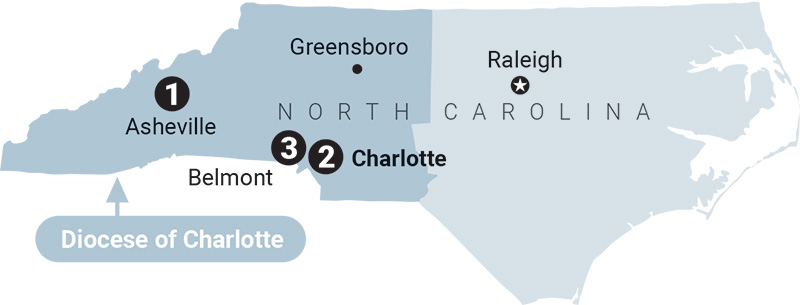 CHARLOTTE — The Jubilee Year of Hope provides an invitation to step outside our daily lives and deepen our faith by going on a pilgrimage.
CHARLOTTE — The Jubilee Year of Hope provides an invitation to step outside our daily lives and deepen our faith by going on a pilgrimage.
However, traveling to Rome, Jerusalem or other sacred places around the world might not be possible for everyone due to health, finances, family or work commitments.
That doesn’t mean that faithful Catholics need to miss out on the benefits of a Jubilee Year, which happens once every 25 years and offers the opportunity to receive an indulgence.
Three local pilgrimage sites – all listed on the National Register of Historic Places – have been designated in the Diocese of Charlotte: St. Lawrence Basilica in Asheville; Mary, Help of Christians Basilica at Belmont Abbey in Belmont; and St. Patrick Cathedral in Charlotte.
As Bishop Martin has shared: “This sacred time is a profound gift, inviting us to renew our faith, seek reconciliation, and rediscover the boundless mercy of God.” Take the time to deepen your commitment to living and proclaiming the Gospel with hope through a local pilgrimage.
 St. Lawrence Basilica, Asheville
St. Lawrence Basilica, Asheville
One of two minor basilicas in the Diocese of Charlotte, St. Lawrence was designed and built in 1905 by renowned Spanish architect Rafael Guastavino. Pope John Paul II elevated it to a minor basilica in 1993. The red brick building, built in the Spanish Renaissance style, is capped by a copper dome guarded by statues of St. Lawrence, St. Stephen and St. Aloysius Gonzaga. The 82-foot-by-58-foot dome, constructed of terracotta tile, is one of the largest free-standing elliptical domes in North America. It features the vaulting technique and herringbone tile pattern that Guastavino used at Grand Central Terminal and Ellis Island’s Registry Room, as well as 200-plus other locations in New York City, and at Asheville’s Biltmore House.
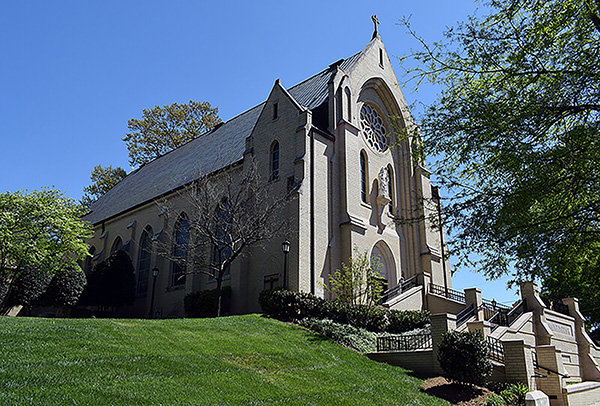
St. Patrick Cathedral, Charlotte
Construction on St. Patrick Church began on March 17, 1938 – St. Patrick’s Day. It was built adjacent to the O’Donoghue School (now St. Patrick School), which had relocated to Dilworth in 1930. Frank E. Frimmer of Austria designed the edifice, and stained glass windows were produced by the Henry Keck Studio in Syracuse, N.Y. Bishop-elect Michael J. Begley selected St. Patrick as the cathedral for the new diocese of Charlotte, and it served as the location for his ordination and installation on Jan. 12, 1972. A $2.6 million project completed in 2024 repaired water damage to the roof and exterior. The plaster walls were repaired so that North Carolina artist Lisa Autry could add detailed artwork on the rib arches and walls, around the windows and – most dramatically – in the sanctuary.
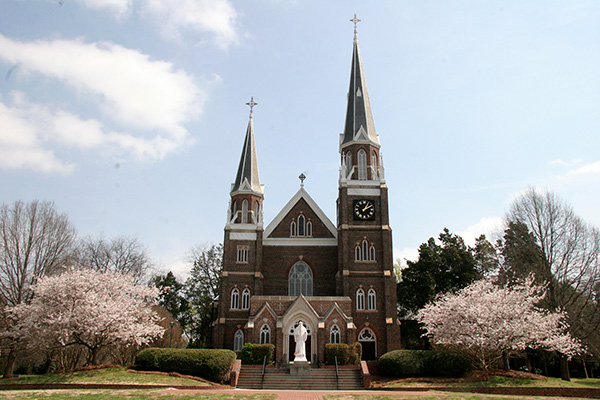
Mary, Help of Christians Basilica at Belmont Abbey, Belmont
Belmont Abbey is a monastery of Benedictine monks founded in 1876 that follows the Rule of St. Benedict of Nursia. The Basilica of Mary, Help of Christians is the central structure on the campus. The basilica was built in the neo-Gothic style in 1892 and was completely renovated in 1965. St. Katharine Drexel was one of its benefactors. It features prize-winning painted glass windows and a unique baptismal font made from an old slave auction stone. In 1998 the church was named a minor basilica by Pope John Paul II. Its cemetery contains the graves of Abbot Leo Haid, founding abbot of the monastery, and two of the diocese’s former shepherds: Bishop Michael Begley and Bishop William Curlin.
— Catholic News Herald
 More online
More online
At www.charlottediocese.org/jubilee-2025: Learn more about local and international pilgrimages, other pilgrimage sites to visit, how to obtain an indulgence, and upcoming events and celebrations.



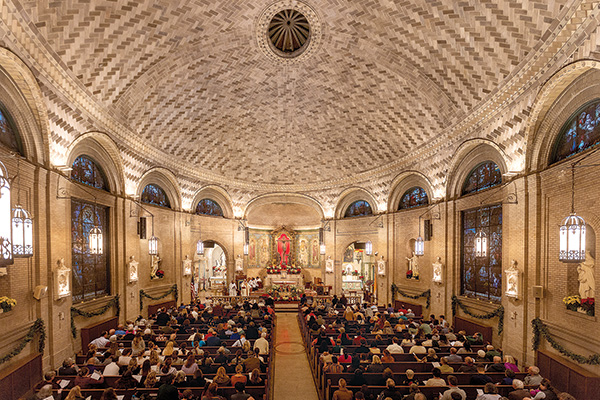 St. Lawrence Basilica, Asheville
St. Lawrence Basilica, Asheville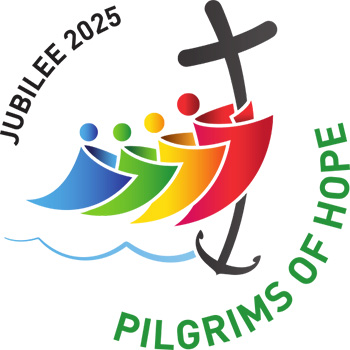 More online
More online